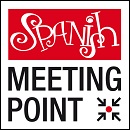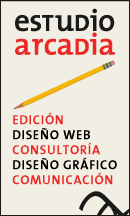Spanish schools and accommodation to study Spanish in Spain
Recent posts
Last schools
introduced
introduced
0 Accommodation

1 Spanish schools

Learning Spanish in Tenerife. The tourist guide to study your Spanish course.
General Information. 222,000 inhabitants. Santa Cruz de Tenerife is the capital of the island of Tenerife, which belongs to the Autonomous Community of the Canary Islands. It has 58 kilometres of coastline, divided by the Barranco de Santos ravine. Santa Cruz de Tenerife is a melting pot of different cultures - Spanish, Arab, Peruvian, Bolivian and Hindu - and has long been a stepping stone between Europe, Africa and the American continent. The University of La Laguna is located in the nearby city of San Cristóbal and caters for some 26,000 students. Santa Cruz de Tenerife is a very attractive place to study Spanish with some language schools offering a wide range of courses.
Surrounding Areas. San Cristóbal de la Laguna (10 kilometres), and Parque Nacional del Teide (70 kilometres), whose volcano is the highest mountain in the whole of Spain; both Mount Teide itself and the surrounding National Park are UNESCO World Heritage Sites. Other excursions: to the beaches on the south coast, to Puerto de la Cruz, a tourist resort on the north coast, and to the other islands of the Canary archipelago.
Main Sights. The Castle of St. John the Baptist (Castillo de San Juan Bautista), also known as the Black Castle (Castillo Negro) dates from the 17th century and was rebuilt in 1765. The Castle or Tower of St. Andrew (Castillo o Torre de San Andrés), which once offered protection against marauding pirates. The Church of St. Francis of Assisi (Iglesia de San Francisco de Asís), one of the oldest in Santa Cruz de Tenerife, containing the Cristo de Santa Cruz statue. The Masonic Temple of Santa Cruz de Tenerife. Las Ramblas, with fine examples of modernist architecture. Parks and squares such as Parque García Sanabria, Parque de La Granja, Plaza de España and Plaza de Isabel II.
Culture. The Canary Islands Classical Music Festival (between January and March). The Tenerife Opera Festival (September). The Santa Blues Festival (June). The Plátano Rock Festival (June). The Fine Art Museum (Museo de Bellas Artes), which has works on loan from Madrid's El Prado museum. The Museum of Nature and Mankind (Museo de la Naturaleza y el Hombre). El Tanque, a lively cultural centre. Teatro Guimerá (1851) and the striking Auditorio de Tenerife, designed by the architect Santiago Calatrava, are the city's main performance venues.
Beaches. Santa Cruz de Tenerife has six beaches, including Playa de Las Teresitas, the most popular among local residents, an artificial beach with sand brought from the Sahara Desert in 1973; Playa del Roque de las Bodegas; Playa de Almáciga; Playa de Benijo, from where you can see Los Roques de Anaga, a nature reserve of outstanding botanical diversity; and Playa de Las Gaviotas, a nudist beach which is also excellent for surfing. Parque Marítimo César Manrique, an impressive leisure complex comprising two saltwater swimming pools, a small sandy cove, cafeterias, crèche, gymnasium... and Playa de Antequera, which can be reached by boat. The other beaches on the island are: Playa de Las Américas, Playa de los Cristianos (both on the south coast), Playa de las Vistas, Playa de Troya and Playa de las Galletas. The beaches are a major attraction for the many students who decide to study Spanish in Santa Cruz de Tenerife.
Shopping. Given that the city's economy is largely based on services, it has a great duty-free shopping infrastructure. The best places for shopping are Calle del Castillo, Calle San José, Calle del Pilar, Calle Viera y Clavijo and Calle Teobaldo Power, all in the city centre, the long, wide boulevards known as Las Ramblas, especially Rambla de Pulido, and Calle Ramón y Cajal. There are also shopping centres on Avenida 3 de Mayo and in the Añaza neighbourhood.
Gastronomy. All along the city's coastline there are numerous beach bars and restaurants which offer all kinds of fish at reasonable prices. The best option for a tapas crawl is the area around the Church of the Immaculate Conception (Iglesia de la Concepción). The local gastronomic staples are fish and molluscs, honey, cheese and wine, not forgetting the ubiquitous papas arrugás, ‘wrinkled' new potatoes boiled in seawater until the skin is salt-crusted, then baked and served with a cold spicy sauce.
Sports. Santa Cruz de Tenerife is an ideal location for nautical sports such as windsurfing, jet-skiing and water-skiing so you can learn these sports here, there are also several golf courses in the area. Santa Cruz de Tenerife has a football stadium, Heliodoro Rodríguez López, the home of Club Deportivo Tenerife, recently relegated to the second division after a successful spell in the top flight.
Fiestas. The most popular local fiesta in Santa Cruz de Tenerife is the Carnival. Considered one of the most spectacular celebrations of its kind in the world, its importance is reflected in its Event of International Tourist Interest status, a distinction it shares with the Carnavales of Cádiz. During the Fiestas de Mayo at the beginning of May, the locals dress up in traditional costume and gather to enjoy typical food, wine and dancing. In 1999, this open-air picnic dinner set a new Guinness World Record for the highest number of participants.
Transport. Santa Cruz de Tenerife has a tram service with two lines, one of which goes all the way to La Laguna. Numerous ferries run from the port to the rest of the Canary Islands and to the Spanish Peninsula. There is also an international airport, Tenerife Norte, in nearby La Laguna. In the city itself, a special tourist train offers a sightseeing tour of the main places of interest. You can go from Santa Cruz de Tenerife to other Spanish cities by ship or by plane.
Nightlife. Students who decide to study Spanish in Santa Cruz de Tenerife will discover a very active nightlife. When it is time to party, locals and tourists alike head for Parque Marítimo César Manrique, Avenida 3 de Mayo, Calle La Noria and Residencial Anaga. Another popular area is an industrial estate called El Mayorazgo, where there are several late-night discotheques.
Surrounding Areas. San Cristóbal de la Laguna (10 kilometres), and Parque Nacional del Teide (70 kilometres), whose volcano is the highest mountain in the whole of Spain; both Mount Teide itself and the surrounding National Park are UNESCO World Heritage Sites. Other excursions: to the beaches on the south coast, to Puerto de la Cruz, a tourist resort on the north coast, and to the other islands of the Canary archipelago.
Main Sights. The Castle of St. John the Baptist (Castillo de San Juan Bautista), also known as the Black Castle (Castillo Negro) dates from the 17th century and was rebuilt in 1765. The Castle or Tower of St. Andrew (Castillo o Torre de San Andrés), which once offered protection against marauding pirates. The Church of St. Francis of Assisi (Iglesia de San Francisco de Asís), one of the oldest in Santa Cruz de Tenerife, containing the Cristo de Santa Cruz statue. The Masonic Temple of Santa Cruz de Tenerife. Las Ramblas, with fine examples of modernist architecture. Parks and squares such as Parque García Sanabria, Parque de La Granja, Plaza de España and Plaza de Isabel II.
Culture. The Canary Islands Classical Music Festival (between January and March). The Tenerife Opera Festival (September). The Santa Blues Festival (June). The Plátano Rock Festival (June). The Fine Art Museum (Museo de Bellas Artes), which has works on loan from Madrid's El Prado museum. The Museum of Nature and Mankind (Museo de la Naturaleza y el Hombre). El Tanque, a lively cultural centre. Teatro Guimerá (1851) and the striking Auditorio de Tenerife, designed by the architect Santiago Calatrava, are the city's main performance venues.
Beaches. Santa Cruz de Tenerife has six beaches, including Playa de Las Teresitas, the most popular among local residents, an artificial beach with sand brought from the Sahara Desert in 1973; Playa del Roque de las Bodegas; Playa de Almáciga; Playa de Benijo, from where you can see Los Roques de Anaga, a nature reserve of outstanding botanical diversity; and Playa de Las Gaviotas, a nudist beach which is also excellent for surfing. Parque Marítimo César Manrique, an impressive leisure complex comprising two saltwater swimming pools, a small sandy cove, cafeterias, crèche, gymnasium... and Playa de Antequera, which can be reached by boat. The other beaches on the island are: Playa de Las Américas, Playa de los Cristianos (both on the south coast), Playa de las Vistas, Playa de Troya and Playa de las Galletas. The beaches are a major attraction for the many students who decide to study Spanish in Santa Cruz de Tenerife.
Shopping. Given that the city's economy is largely based on services, it has a great duty-free shopping infrastructure. The best places for shopping are Calle del Castillo, Calle San José, Calle del Pilar, Calle Viera y Clavijo and Calle Teobaldo Power, all in the city centre, the long, wide boulevards known as Las Ramblas, especially Rambla de Pulido, and Calle Ramón y Cajal. There are also shopping centres on Avenida 3 de Mayo and in the Añaza neighbourhood.
Gastronomy. All along the city's coastline there are numerous beach bars and restaurants which offer all kinds of fish at reasonable prices. The best option for a tapas crawl is the area around the Church of the Immaculate Conception (Iglesia de la Concepción). The local gastronomic staples are fish and molluscs, honey, cheese and wine, not forgetting the ubiquitous papas arrugás, ‘wrinkled' new potatoes boiled in seawater until the skin is salt-crusted, then baked and served with a cold spicy sauce.
Sports. Santa Cruz de Tenerife is an ideal location for nautical sports such as windsurfing, jet-skiing and water-skiing so you can learn these sports here, there are also several golf courses in the area. Santa Cruz de Tenerife has a football stadium, Heliodoro Rodríguez López, the home of Club Deportivo Tenerife, recently relegated to the second division after a successful spell in the top flight.
Fiestas. The most popular local fiesta in Santa Cruz de Tenerife is the Carnival. Considered one of the most spectacular celebrations of its kind in the world, its importance is reflected in its Event of International Tourist Interest status, a distinction it shares with the Carnavales of Cádiz. During the Fiestas de Mayo at the beginning of May, the locals dress up in traditional costume and gather to enjoy typical food, wine and dancing. In 1999, this open-air picnic dinner set a new Guinness World Record for the highest number of participants.
Transport. Santa Cruz de Tenerife has a tram service with two lines, one of which goes all the way to La Laguna. Numerous ferries run from the port to the rest of the Canary Islands and to the Spanish Peninsula. There is also an international airport, Tenerife Norte, in nearby La Laguna. In the city itself, a special tourist train offers a sightseeing tour of the main places of interest. You can go from Santa Cruz de Tenerife to other Spanish cities by ship or by plane.
Nightlife. Students who decide to study Spanish in Santa Cruz de Tenerife will discover a very active nightlife. When it is time to party, locals and tourists alike head for Parque Marítimo César Manrique, Avenida 3 de Mayo, Calle La Noria and Residencial Anaga. Another popular area is an industrial estate called El Mayorazgo, where there are several late-night discotheques.
© TEXT: SPANISH IN TOUR.
VIDEO: Cedido por Turismo de Tenerife
VIDEO: Cedido por Turismo de Tenerife
















